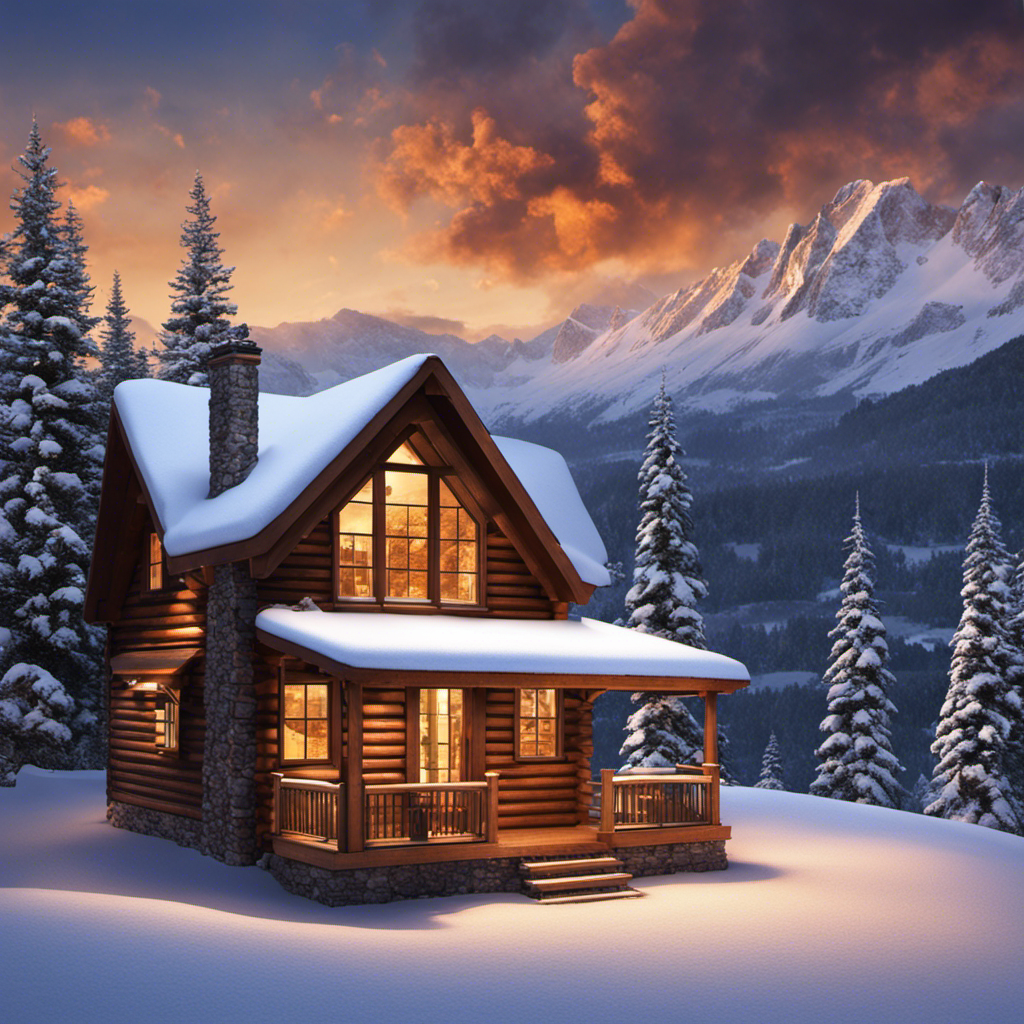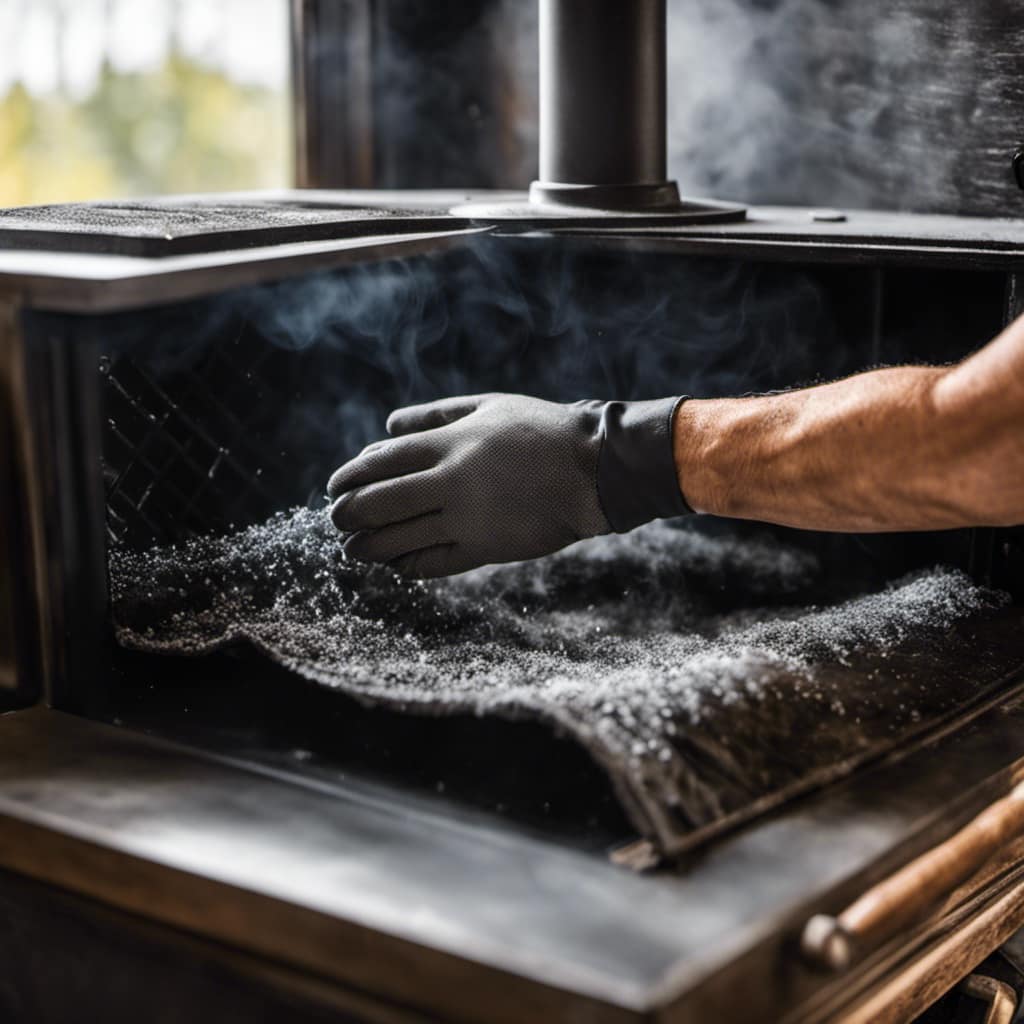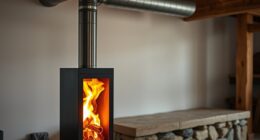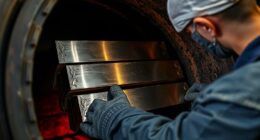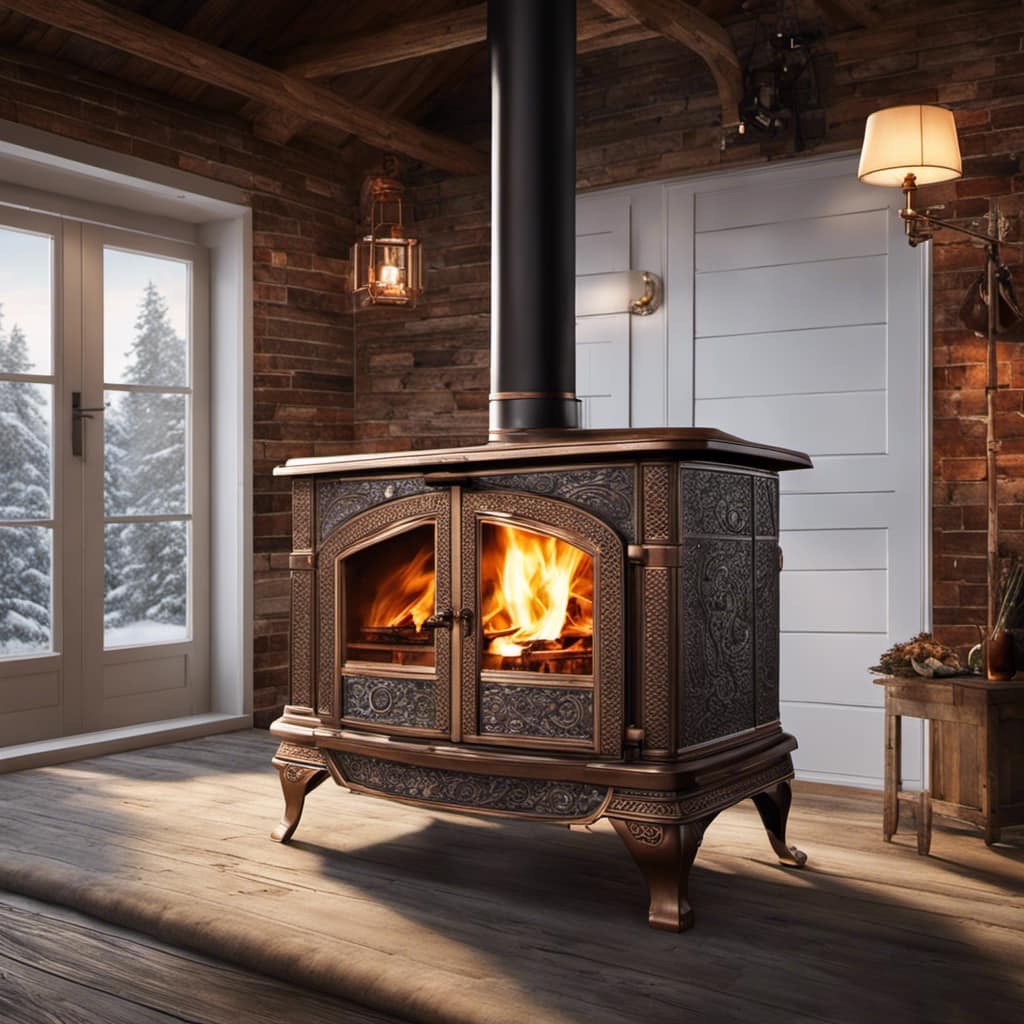
Have you ever thought about how hot your chimney can get as a wood stove owner? Trust me, it can reach temperatures that may surprise you!
Picture this: imagine holding your hand near a roaring bonfire, feeling the intense heat radiating from the flames. Now, multiply that heat by several times, and you’ll start to grasp the temperature range your wood stove chimney can reach.
In this article, we’ll explore the factors that influence chimney temperature and provide essential tips for maintaining a safe and efficient chimney.
Key Takeaways
- Chimney insulation helps retain heat inside the chimney, preventing heat loss.
- Weather conditions, such as cold temperatures or wind, can decrease or increase chimney temperature.
- Wood with high moisture content produces lower temperatures in the chimney.
- Regularly inspect and clean the chimney to prevent common problems.
Factors Affecting Wood Stove Chimney Temperature
I’m curious about the factors that can affect the temperature of a wood stove chimney.
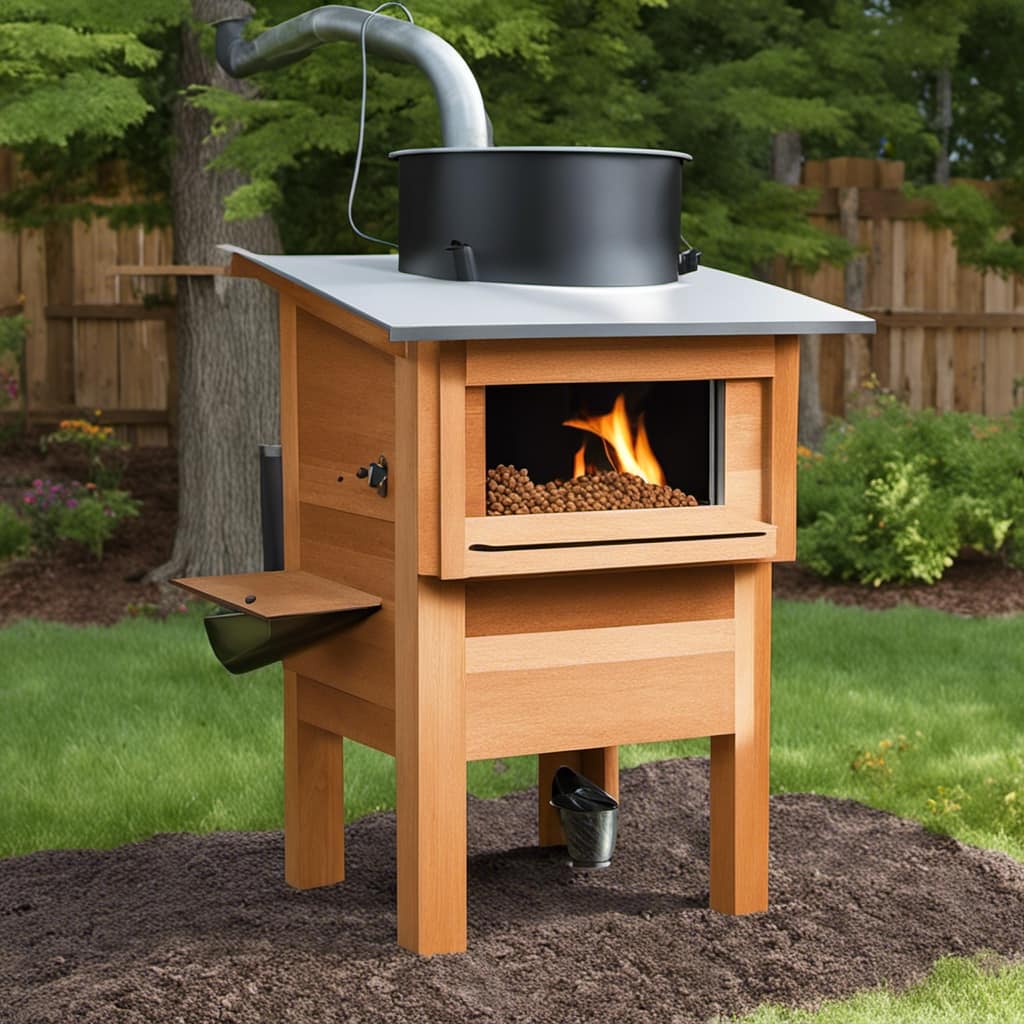
One important factor is chimney insulation. Proper insulation helps to retain heat inside the chimney, allowing it to reach higher temperatures. A well-insulated chimney prevents heat from escaping, which can cause the temperature to drop.
Another factor that affects chimney temperature is the impact of weather. During cold weather, the outside temperature can decrease the overall temperature of the chimney. Conversely, hot weather can cause the chimney temperature to rise. Additionally, wind can influence the temperature by either increasing or decreasing it, depending on the direction and strength of the wind.
These factors, chimney insulation and weather conditions, play a significant role in determining the temperature of a wood stove chimney.
Now, let’s explore the typical temperature range of a wood stove chimney.
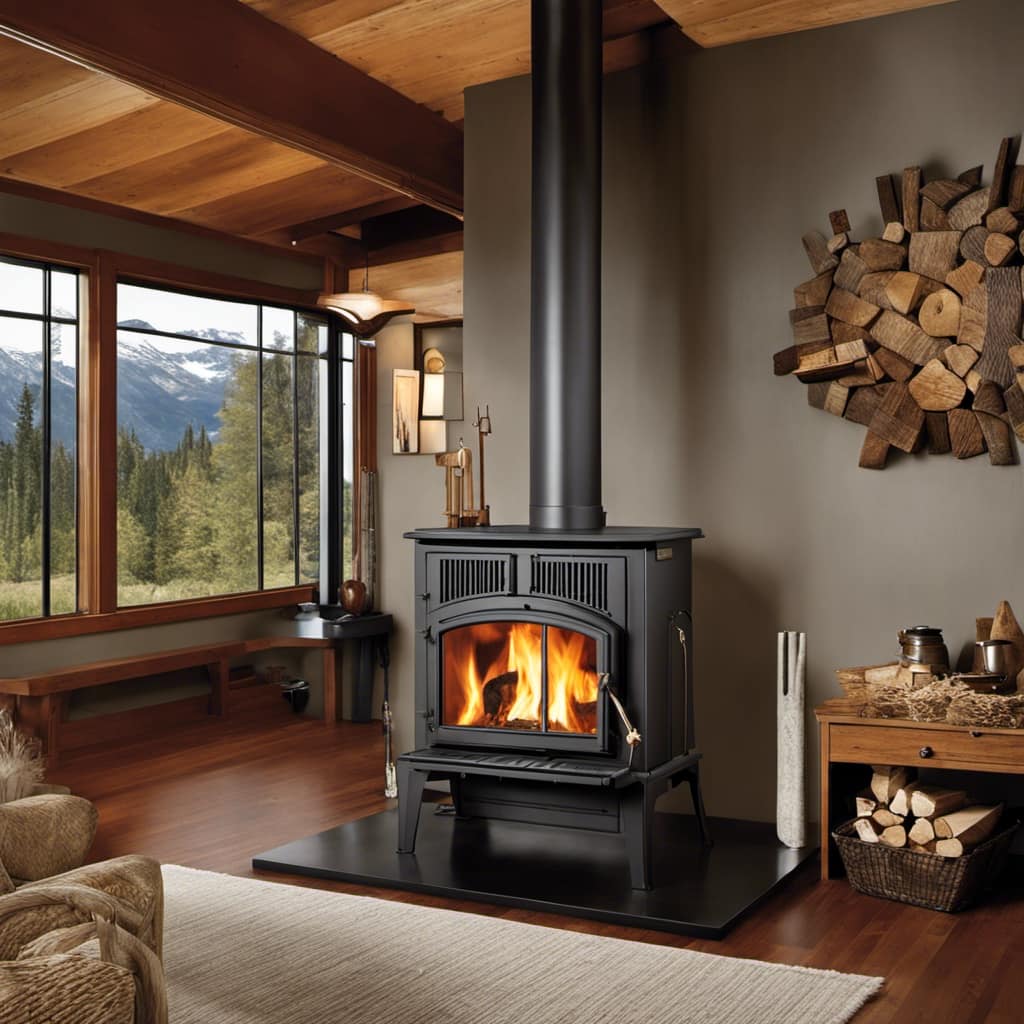
Typical Temperature Range of a Wood Stove Chimney
The temperature range of a typical wood stove chimney can vary depending on various factors. These factors include the type of wood stove, the size of the chimney, and the insulation of the chimney.
Here are some important points to consider:
-
Optimal chimney height for efficient wood stove operation:
A taller chimney creates a stronger draft, which helps to remove smoke and gases more effectively.
The height of the chimney should be in accordance with building codes and regulations to ensure safety. -
Impact of chimney insulation on wood stove performance:
Insulating the chimney can help to maintain higher temperatures inside, improving the combustion efficiency of the wood stove.
Insulation reduces heat loss and prevents the chimney from cooling down quickly, allowing for longer, more efficient burning.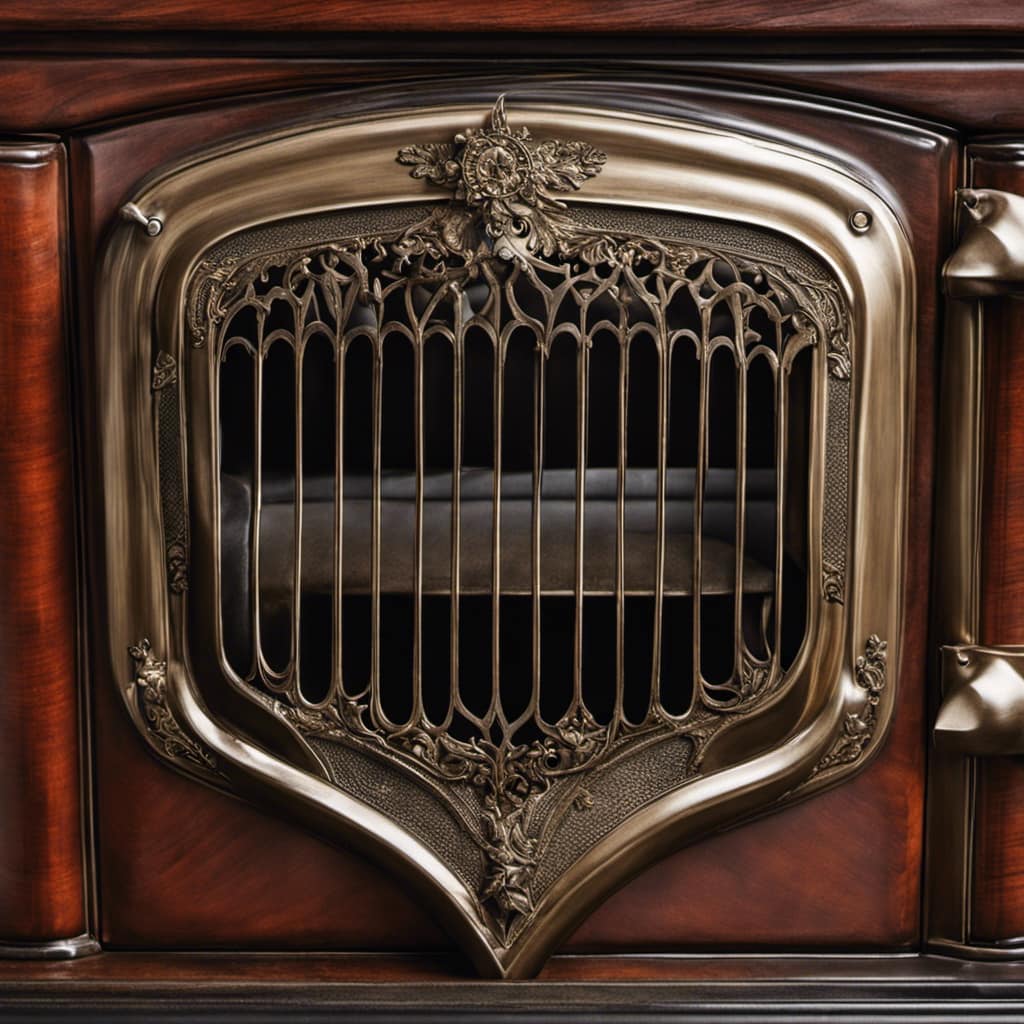
Understanding these factors can help you determine the optimal temperature range for your wood stove chimney and maximize its performance.
Understanding the Impact of Wood Types on Chimney Heat
When burning different types of wood, I’ve noticed that certain types tend to produce higher temperatures in the chimney. This is due to the moisture content and combustion efficiency of the wood. Wood with high moisture content takes longer to burn and produces less heat, resulting in lower temperatures in the chimney. On the other hand, wood with low moisture content burns more efficiently and generates higher temperatures.
The moisture content of the wood can be influenced by factors such as the type of tree, the seasoning process, and the storage conditions. Understanding the impact of wood types on chimney heat is crucial for optimizing the performance of your wood stove.
To measure the temperature of your wood stove chimney, there are specific tools like chimney thermometers available that can be easily installed for accurate monitoring.
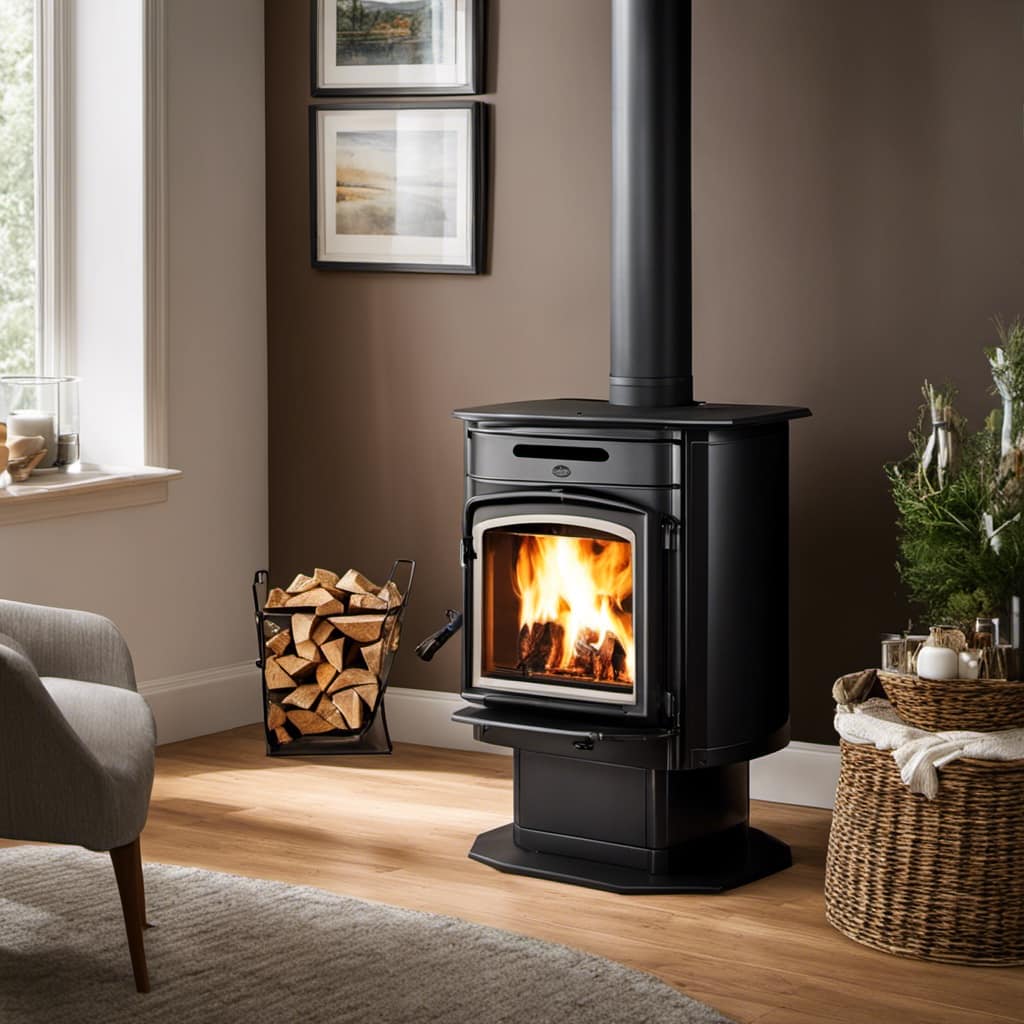
How to Measure the Temperature of Your Wood Stove Chimney
To accurately monitor the temperature of my wood stove chimney, I can easily install a chimney thermometer. This device provides precise measurements and ensures the safety and efficiency of my wood stove.
The chimney thermometer helps me maintain the optimal temperature for my wood stove and prevents the risk of overheating or chimney fires.
To measure the temperature accurately, I need to consider the following factors:
- Placement of the thermometer: Installing the thermometer near the top of the chimney provides a more accurate reading.
- Chimney insulation: Proper insulation helps in retaining heat and prevents temperature fluctuations.
- Measuring accuracy: Using a digital thermometer with a wide temperature range ensures accurate readings.
Essential Tips for Maintaining a Safe and Efficient Chimney
I ensure the safety and efficiency of my chimney by regularly inspecting and cleaning it. Proper maintenance is crucial to prevent common chimney problems and ensure optimal performance.
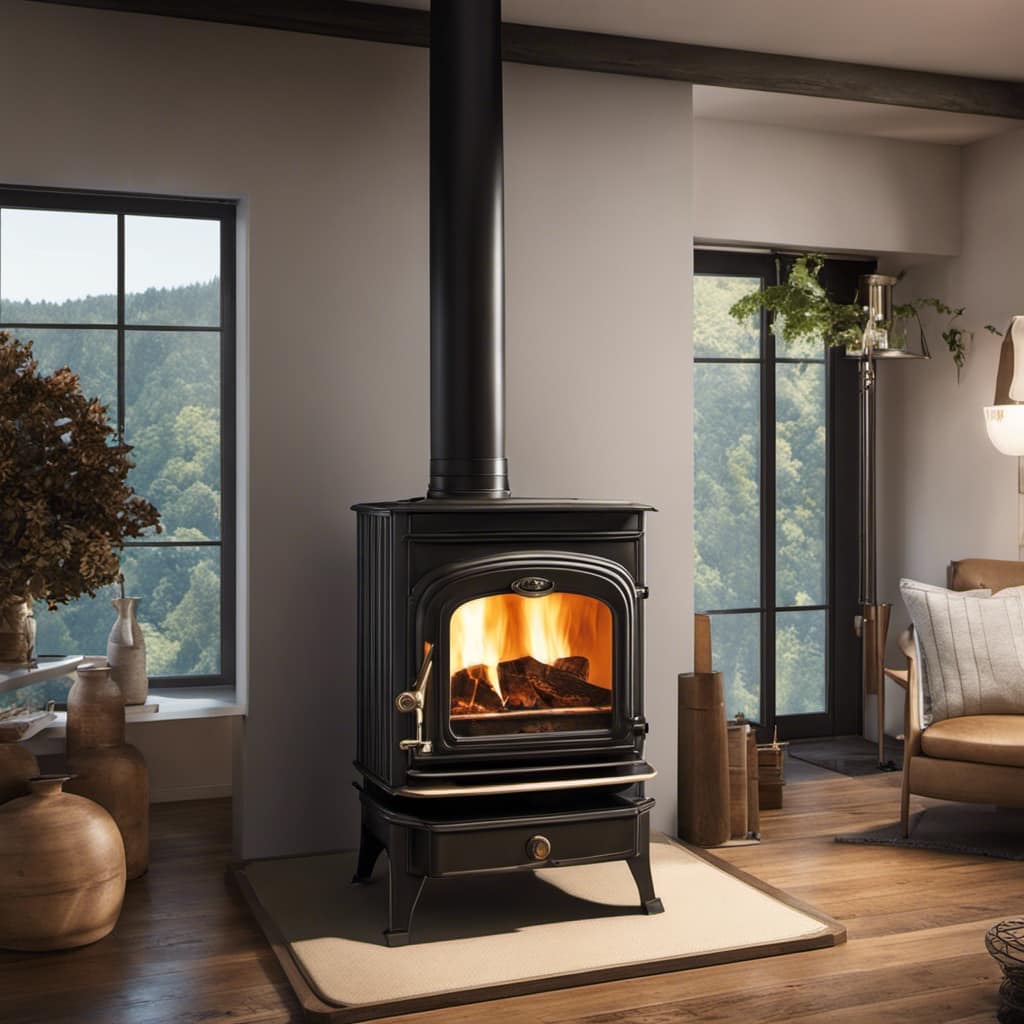
When it comes to cleaning techniques, the most effective method is chimney sweeping. This involves removing creosote buildup, which can lead to chimney fires.
Regular inspections are also essential to identify potential issues such as cracks, blockages, or damaged mortar. By addressing these problems promptly, I can prevent further damage and ensure the safe operation of my chimney.
Other common chimney problems include chimney leaks, bird or animal nests, and poor ventilation. By staying proactive and following recommended cleaning techniques, I can maintain a safe and efficient chimney for years to come.
Frequently Asked Questions
How Does the Height of a Wood Stove Chimney Affect Its Temperature?
The height of a wood stove chimney affects its temperature by creating a stronger draft, which increases the air flow and improves combustion efficiency. A taller chimney also allows for better smoke dispersion and reduces the risk of creosote buildup.
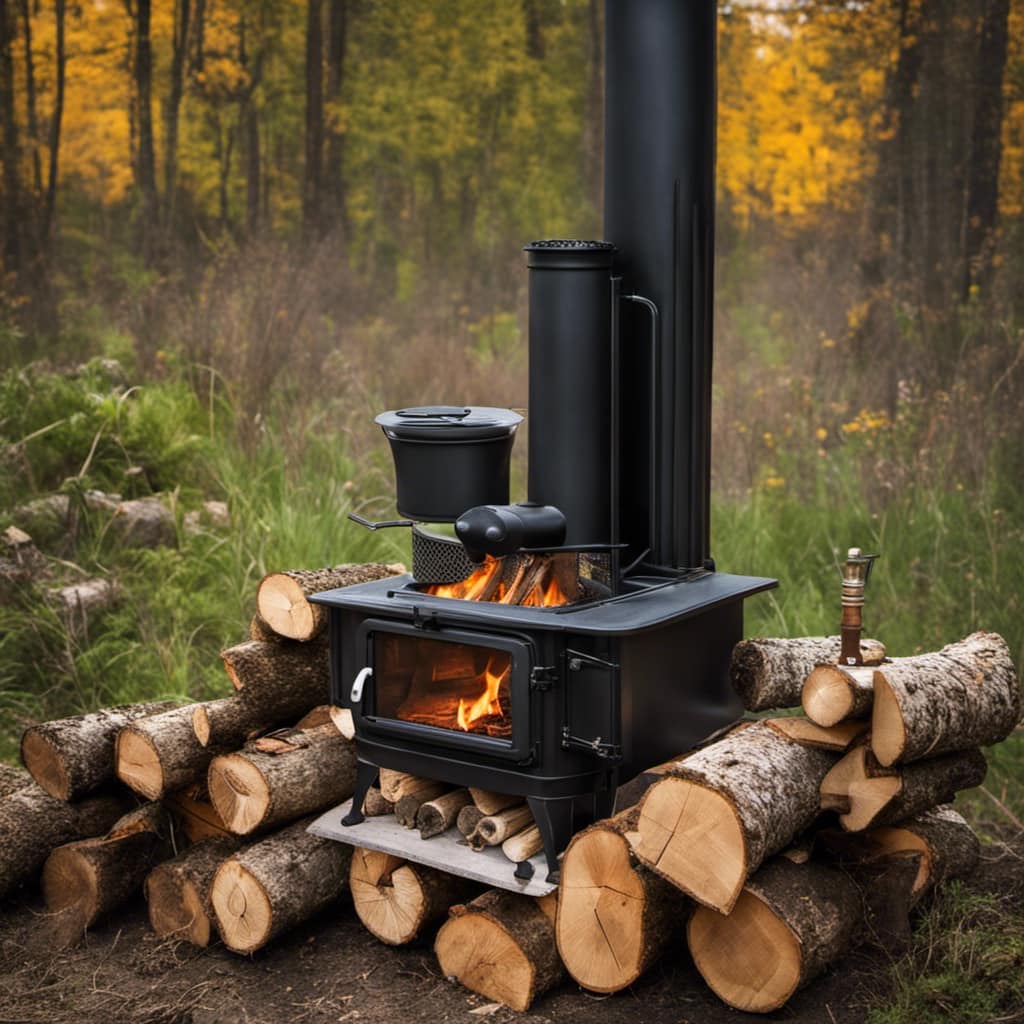
Can the Temperature of a Wood Stove Chimney Be Too High?
Yes, the temperature of a wood stove chimney can be too high. The effect of insulation on wood stove chimney temperature and the impact of chimney diameter are factors that can influence the temperature.
Does the Outside Temperature Affect the Temperature of a Wood Stove Chimney?
The outside temperature can impact the efficiency of a wood stove chimney. Insulating the chimney can improve heating performance by minimizing heat loss.
Is It Normal for a Wood Stove Chimney to Produce Sparks at High Temperatures?
Yes, it’s normal for a wood stove chimney to produce sparks at high temperatures. However, it’s important to prioritize safety and regularly maintain your wood stove chimney to prevent any potential hazards.
Can the Temperature of a Wood Stove Chimney Cause Damage to the Surrounding Walls or Ceilings?
The temperature of a wood stove chimney can cause damage to surrounding walls or ceilings if not properly insulated. To prevent damage, ensure proper insulation, use a heat shield, and maintain a safe distance between the chimney and combustible materials.
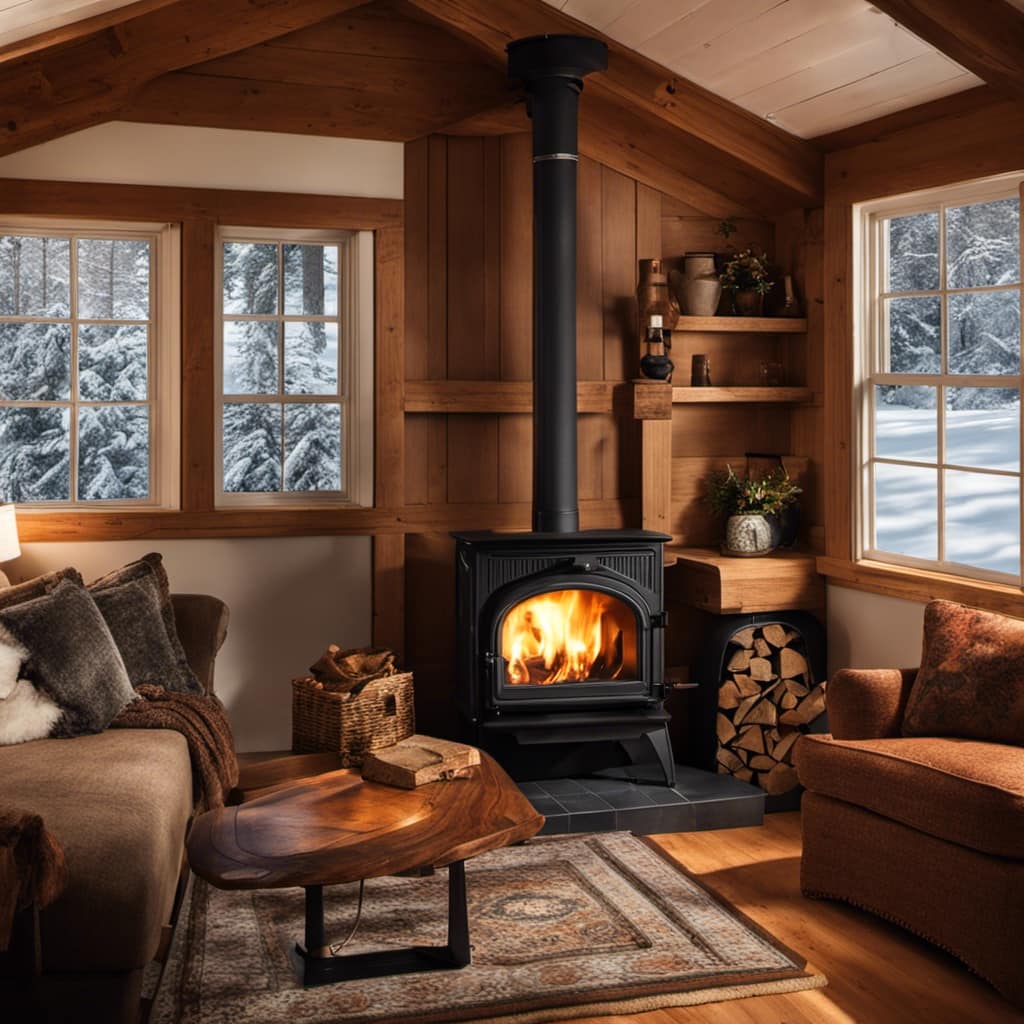
Conclusion
As the flames dance and crackle in the wood stove, the chimney silently bears witness to the intense heat it channels. With temperatures reaching up to 1,000 degrees Fahrenheit, the chimney becomes a symbol of resilience and efficiency.
Its sturdy construction and proper maintenance ensure a safe and effective wood burning experience. So, as you bask in the warmth of your wood stove, remember to appreciate the hardworking chimney that silently carries away the heat and smoke, allowing you to enjoy the cozy ambiance it creates.
Growing up surrounded by the vast beauty of nature, Sierra was always drawn to the call of the wild. While others sought the comfort of the familiar, she ventured out, embracing the unpredictable and finding stories in the heartbeat of nature.
At the epicenter of every remarkable venture lies a dynamic team—a fusion of diverse talents, visions, and passions. The essence of Best Small Wood Stoves is crafted and refined by such a trio: Sierra, Logan, and Terra. Their collective expertise has transformed the platform into a leading authority on small wood stoves, radiating warmth and knowledge in equal measure.



